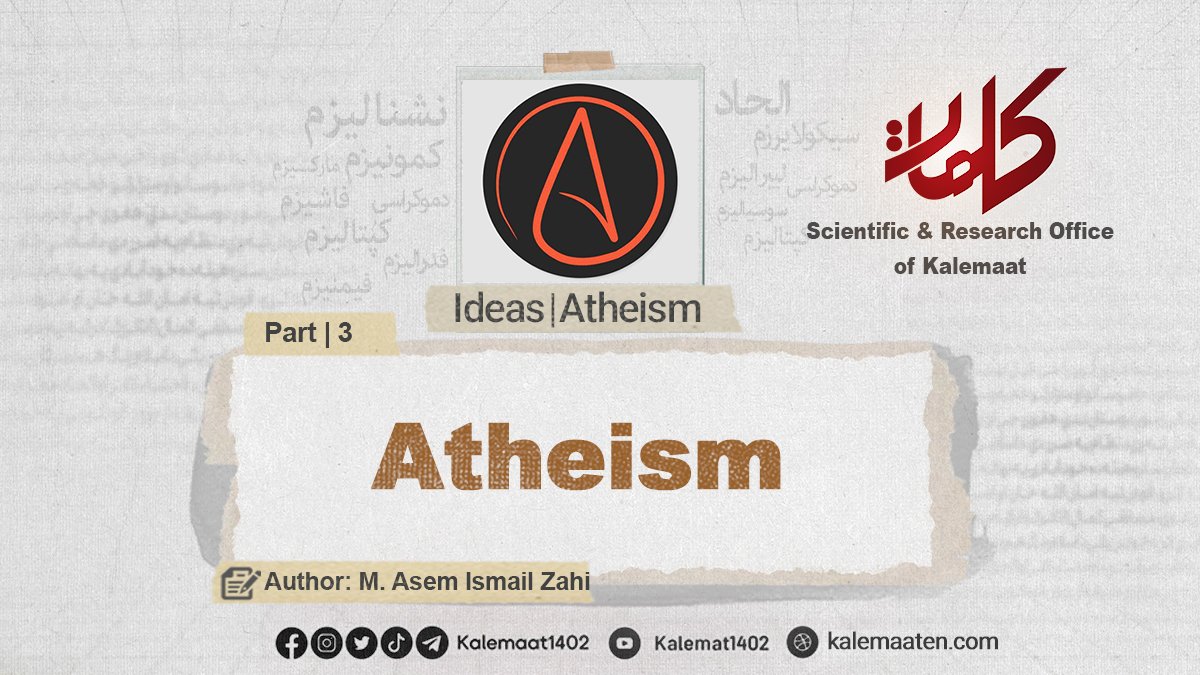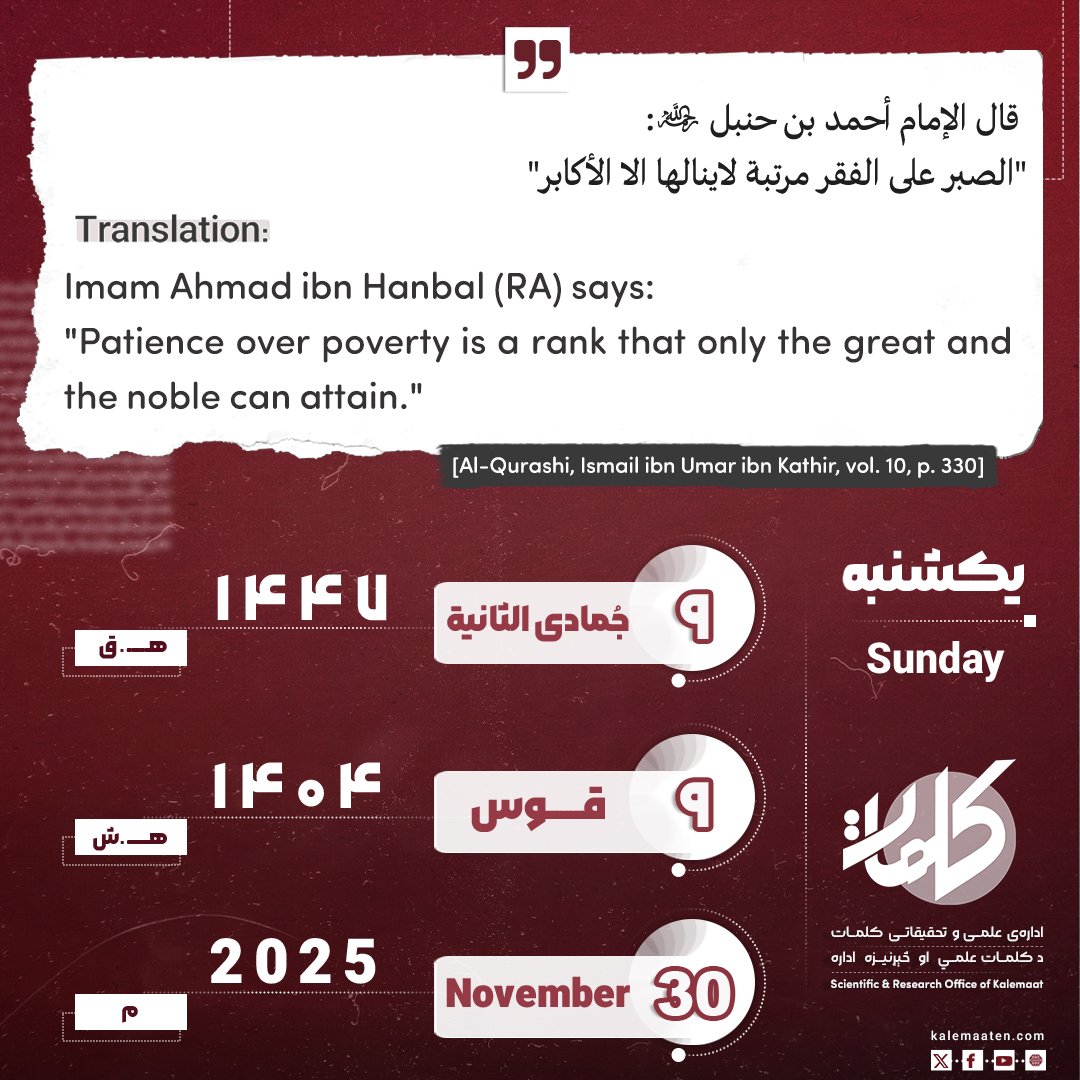
Author: M. Asim Ismail Zahi
Atheism (Part 3)
European Renaissance (Deist Period)
In the 15th to 17th centuries, only the circle of philosophical skepticism and of course religious criticism increased until the subsequent findings of empirical science challenged the positions of various religions towards the natural world once again after the Aristotelian philosophy of the church. Among the thinkers and critics of this period, we can mention Leonardo da Vinci, Niccolò Machiavelli, the Italian philosopher, historian and republican, Bonaventure de Pré, the French writer and researcher, and François Rabelais, the writer and “Renaissance humanist”, whose activities were of course not directly related to atheism, and their focus can be considered more on criticizing religious institutions such as the Church of England and France. Criticism of religious beliefs and church controls, their oppression and their moral interpretations had a great influence on the criticisms raised in the 17th and 18th centuries.
By the advancement of empirical science and philosophy, progressive thinkers such as Gallier and the Italian philosopher and freethinker Lucilius Vanini challenged and questioned the foundations of the orthodox doctrine of the Church, and many of them were brutally condemned to death (usually after torture) by the Catholic Church of their time. Among them, Etienne Dolet in 1546, Lucilius Vanini in 1619, Casimir Liszinski in 1689, and François de la Barre in 1766 were executed, tortured (to death), or crucified for atheism. As science advanced and the influence of Aristotelian philosophy faded at this time, nature was considered more mechanical. The God (Allah) who is receiving more and more attention from philosophers and scientists at this time is the Deist God. In this view, God created the universe and then did not interfere in the affairs of the universe. Therefore, in this view, God had no religion, did not have prophets, did not perform miracles, and even life after death may not exist. What is important in this view is that most people who tend to this view of God followed religion only in a natural or cultural way. This tendency later generated sharp and influential criticism from other Deist thinkers such as Voltaire and Rousseau. During the religious wars of the Protestants, the expression of criticism against religion and atheistic views was so influential that new schools of thought gained independence and recognition one after another within the Christian movement; Among them, deism, Unitarianism, and Anabaptism were the result of the further development of secular humanism and the weakening of traditional religious views. [1]
Religious criticism reached its peak in the 17th and 18th centuries by independent thinkers such as Thomas Hobbes, Spinoza, and David Hume. The best example of this was Hume’s Dialogues Concerning Natural Religions, which was published anonymously after his death. The number of religious defenses against atheism (although many of them did not even admit that there was a school called atheism) increased, and its influence was so great that even the British royal statutes mentioned atheism and considered it a capital offense by the early 19th century. [2]
An overview to the frontiers of modern times
The first known modern atheist who openly deny the existence of God was the French priest Jean Méliès; his radical dissenting views included attacks on the church, religion, Christ, God, and traditional monarchists, which, although written during his lifetime, were only revealed shortly after his death in 1729, when his book was published. The French physician and philosopher Julien Aufre de la Mettre published his groundbreaking book “human is a Machine” on an atheistic and thoroughly materialistic basis in 1748. Other atheistic thinkers throughout the intellectualism followed suit, most notably the wealthy and influential Baron Dolbach, who published his masterpiece “The Mechanism of Nature” in 1770 as the first (admittedly) atheistic book. The success and influence of this book was so great that it was sometimes referred to as the atheists’ bible; at the time of its publication, many countries banned its distribution and even burned it in public. It is interesting to know that theists who sought to criticize it or to become aware of atheism secretly passed Dolbach’s book among their co-religionists! Among other figures, we can mention “Jacques Naigion”, one of Dolbach’s editors, who considered all arguments for God to be circular, contradictory, unreasonable and full of logical problems. [3]
Another editor of Dolbach’s works and a member of the Encyclopedia Britannica was Diderot, who, along with people such as “Helocius”, “Adam Smith”, “Edward Gibson”, “Jean-Jacques Rousseau” and “David Hume” and others of different beliefs and thoughts, would gather and meet in Dolbach’s famous salon. The Salon de la Dulbach left its mark on the French intellectualism and its criticism of the monarchists. Such opportunities for intellectuals to socialize were not only a privilege, but also only available to a part of the usually wealthy (with the exception of Rousseau, who spent part of his life in financial poverty) and educated class. This trend changed only with the French Revolution, which finally brought atheism from its exclusive and limited form to the public sphere. This trend intensified to the point that some militant atheists even decided to expel Christianity from the country by violence, which of course was rightly (since violence and force had become its main theme) met with resistance from Christians, the people, critics, and statesmen, and of course failed. However, apart from the introduction of atheistic ideas into politics or the minds of the masses, the murder of the soul in France made atheism one of the most respected schools of thought in France, just as France still has a large population of atheists and agnostics.
Academic research in the 18th and 19th centuries questioned the textual truth of the Bible; for example, Johann Gottfried, a German intellectualism cleric, was the first to question the text of the Bible in 1779 (Is what is written clearly and completely true? Was the earth really created in six days, in both the Quran and the Bible, with the difference that God rested on the last day, or are the stories and narrations just metaphors and literary beauty of the books?). On the other hand, theories of literary criticism and the results of new research, especially in the fields of philology and linguistics, increased the atmosphere of doubt by showing the similarity of sacred texts to each other and even outside the Abrahamic religions (the birth of individuals from virgins such as: Christ, Buddha, Odysseus, Krishna, etc.). Historical research on the personality and events of the time of Christ not only caused disagreements among researchers about the existence of a person named Christ and the validity of the texts of the Bible and the Torah; but also kept the books related to them under the shadow of doubt (the distortion of the Bible and the Torah, as the only independent evidence confirming the Quran, by distorting it, also calls into question the historical accuracy and authenticity of the Quran). The progress of anthropology also confirmed the similarities between the customs and traditions of Abrahamic and non-Abrahamic religions, to the extent that even tribal or national religions showed clear similarities to Islam. Although these similarities did not eliminate their fundamental contradictions, they themselves became a reason to raise more serious questions: Since different religions are mutually contradictory, which ones are true and which ones are false? What means do we have at our disposal to identify the correctness of one of them in the competition of hypotheses with each other, or even to determine that only one of them is the correct choice? (Or are they all wrong?) Although Matthew Turner defended atheism in a pamphlet, the first major academic work to expound atheistic ideas in English was an essay called “The Necessity of Atheism,” written by the British Romantic poet Percy Shelley, who was 18 years old at the time of publication. The work shocked the authorities, and he and his companion were subjected to great pressure, but for refusing to deny authorship of the essay, he was punished and expelled, along with his classmate Thomas Jefferson Hogg. [4] He faced harsh treatment at Oxford University.
One of the most important points of change in freethinking after 1782 and the breaking of taboos was the resistance of the English publisher and writer Richard Carlyle, along with Jeremy Bentham, to freedom of expression and the publication of Thomas Paine’s books, including Common Sense, The Rights of human, and especially The Age of intellect, which had a significant impact on the general public in France, America, and Britain. Geology and paleontology, with their progress, brought a new path for the freethinking movement; here, the existence of heavy laws and regulations for insulting the sanctities. The publication of Charles Darwin’s revolutionary book “The Origin of Species” in 1859 questioned the foundations of creation, order, and purpose in the most solid and serious way possible, and along with atheism, it opened a path for atheism rather than opening a path to the rejection of religion. The presentation of the theory of evolution and its development not only questioned one of the most important ideas of theism, but also gradually replaced the idea of creation and divine purpose.
The English secularist movement, supported and influenced by George Holyoake (the inventor of the phrase and the simplest foundations of secularism [5]), had overcome the existing difficulties and began to operate on a public level until Holyoake was imprisoned in England in 1842 as the last person convicted of atheism. Another important figure of the atheistic Victorian era was Charles Bradlow, the first atheist elected to the English Parliament; although he was first disqualified on the grounds of disbelief and failure to swear on the Bible, after numerous victories in elections, he finally successfully became a member of the English Parliament in 1886. After the secularization of French society during the Napoleonic era, many liberal and anti-religious thinkers continued to move under the shadow of the international socialist movement, [6] which itself was influenced by rationalists and freethinkers such as Ludwig Feuerbach, Schopenhauer, Marx and Nietzsche. Although it had separated from its classical position and sought to present a political philosophy, the English socialist faced criticism from Bordello. By the end of the 19th century, liberalism had reached a point where Nietzsche boldly wrote several times in his books: “God is dead, human have killed him.” [7]
Continues…
References:
- Ahmadian, Professor Abdullah, New Theology, p. 72, Publisher: Ehsan Publishing House – Tehran, Year of publication: Fourth edition 1391 AH.
- Lap, Ineas, The Psychoanalysis of Atheism, p. 173, Translator: Rafiei Mehrabadi, Mohammad, Publication: Ashian, Tehran, 1377 AH.
- Hawking, Steven, Short Answers to Big Questions, p. 99, Translator: Movaheed, Mazda, Publication: Farhang Nashr Noor, 1389 AH.
- Lap, Ineas, The Psychoanalysis of Atheism, p. 172, Translator: Rafiei Mehrabadi, Mohammad, Publication: Ashian, Tehran, 1377 AH.
- For a more In-depth introduction to secularism, you can refer to the section on Secularism, Theories and Schools of Thought on the website of the Kalamat Scientific and Research Department.
- For a more in-depth introduction to socialism, you can refer to the section on Socialism, Theories and Schools of Thought on the website of the Scientific and Research Department of Kalamat.
- Ghasemi Bojd, Yasin, The Atheist is Dead, p. 366, Publisher: Yasin Book Publishing House, Year of Publication: 1403 AH – Tehran.



